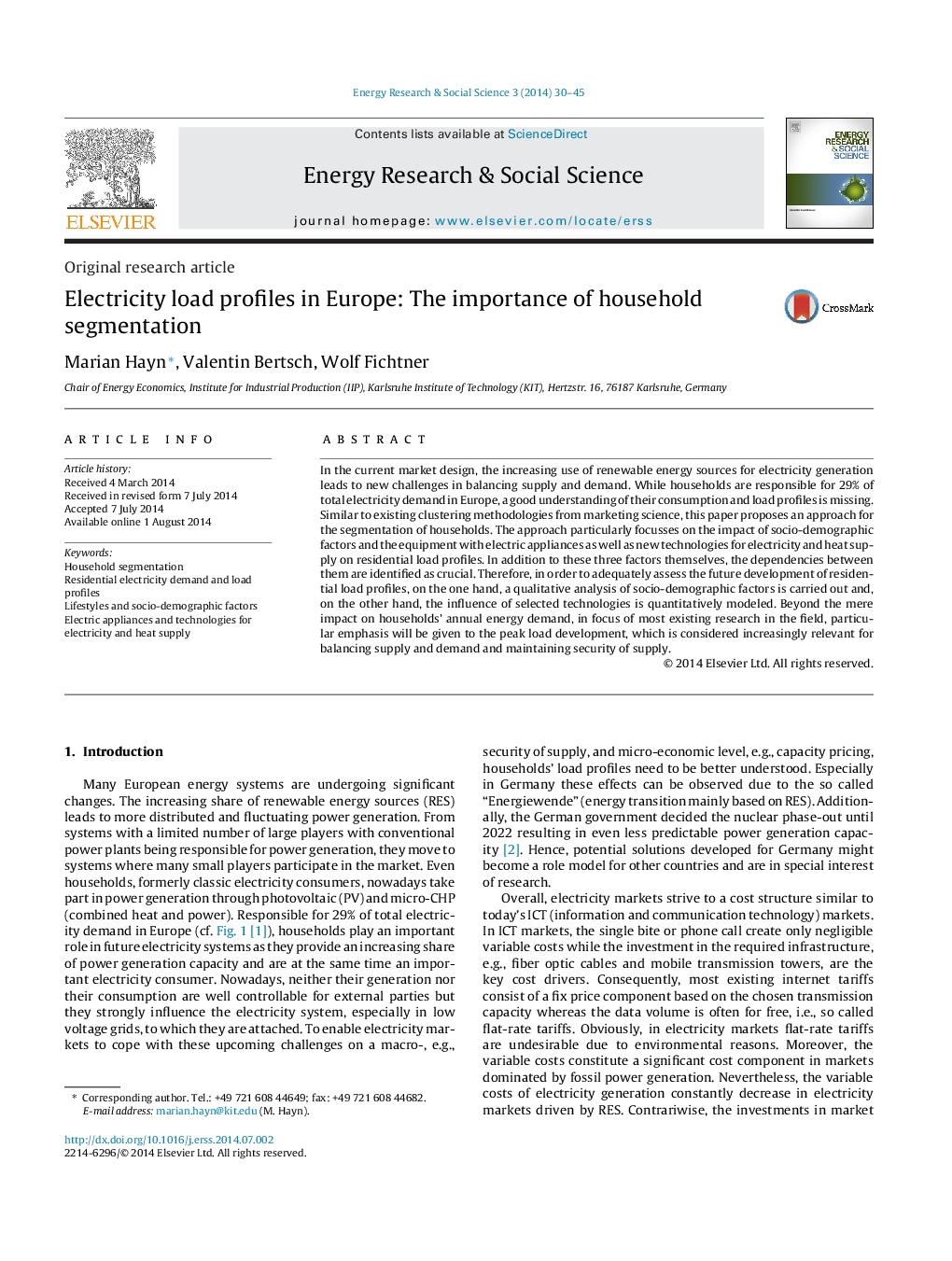| کد مقاله | کد نشریه | سال انتشار | مقاله انگلیسی | نسخه تمام متن |
|---|---|---|---|---|
| 108174 | 161876 | 2014 | 16 صفحه PDF | دانلود رایگان |
In the current market design, the increasing use of renewable energy sources for electricity generation leads to new challenges in balancing supply and demand. While households are responsible for 29% of total electricity demand in Europe, a good understanding of their consumption and load profiles is missing. Similar to existing clustering methodologies from marketing science, this paper proposes an approach for the segmentation of households. The approach particularly focusses on the impact of socio-demographic factors and the equipment with electric appliances as well as new technologies for electricity and heat supply on residential load profiles. In addition to these three factors themselves, the dependencies between them are identified as crucial. Therefore, in order to adequately assess the future development of residential load profiles, on the one hand, a qualitative analysis of socio-demographic factors is carried out and, on the other hand, the influence of selected technologies is quantitatively modeled. Beyond the mere impact on households’ annual energy demand, in focus of most existing research in the field, particular emphasis will be given to the peak load development, which is considered increasingly relevant for balancing supply and demand and maintaining security of supply.
Journal: Energy Research & Social Science - Volume 3, September 2014, Pages 30–45
